Creating a Design Education for the 21st Century: Part 1
To begin my story, it might be worth stating upfront that my foray into design education was purely accidental. My journey began at the end of October 2014. I had decided to join DESIGNATION, a start-up with the mission of bringing the concept of a bootcamp education to full-stack design. The founder, Kevin Yun explained that he wanted to help aspiring designers achieve their career goals, using the same bootcamp model that had been gaining a lot of momentum for coding. He thought if it can work for programming why couldn’t it work for design. The premise seemed promising.
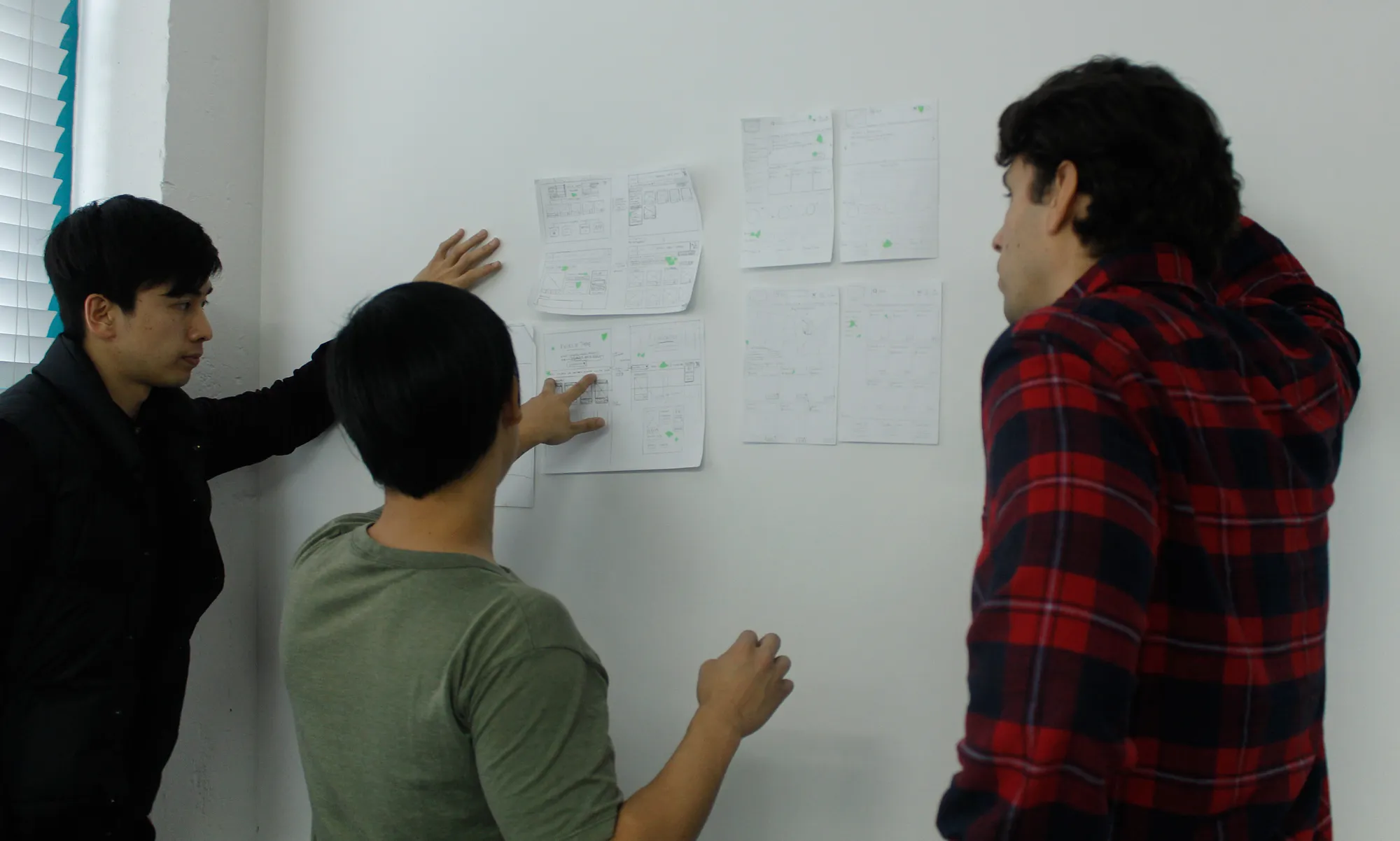
How I Fell Into Design Education
To begin my story, it might be worth stating upfront that my foray into design education was purely accidental. My journey began at the end of October 2014. I had decided to join DESIGNATION, a start-up with the mission of bringing the concept of a bootcamp education to full-stack design. The founder, Kevin Yun explained that he wanted to help aspiring designers achieve their career goals, using the same bootcamp model that had been gaining a lot of momentum for coding. He thought if it can work for programming why couldn’t it work for design. The premise seemed promising.
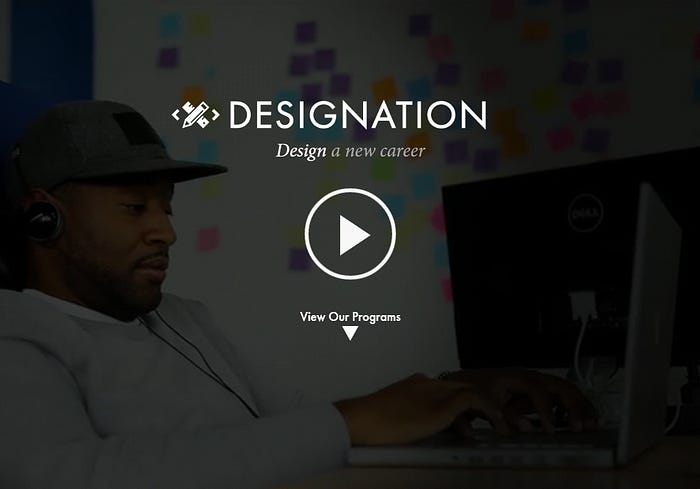
My role was to be that of a facilitator. The position as it was described to me then was to spend 30 minutes every morning with students providing a brief. The brief was a simple design-related topic that I would introduce and then I would provide a day-time exercise which would build on that concept. For the remainder of the day, I could work on my own projects while I answered student questions as they arose.
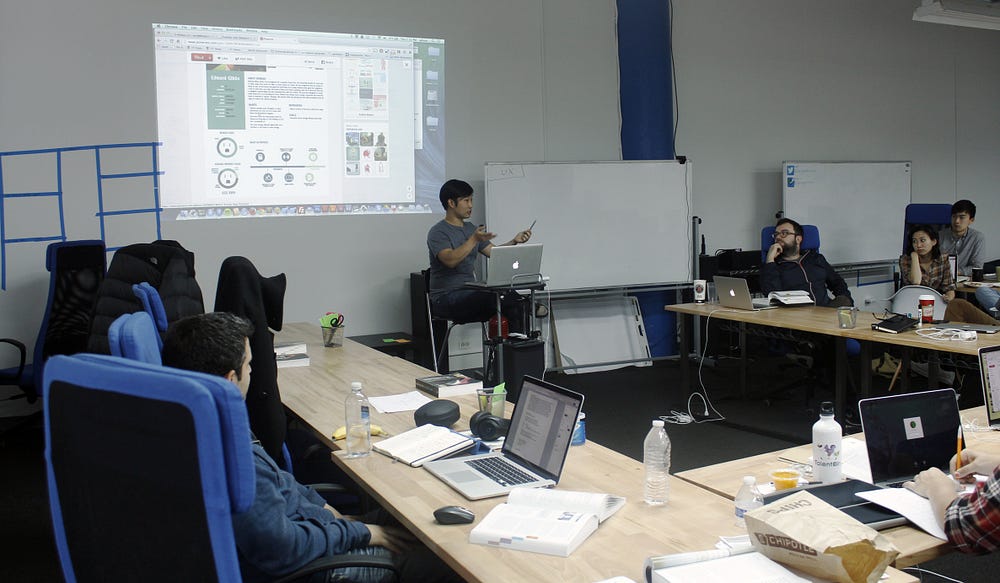
Essentially, the premise was that the students would teach themselves what they needed in order to complete the day-time exercise, and where they got stuck, I would step in and help them overcome their hurdles. I was told all of the curriculum and content was already prepared and all I had to do was facilitate its delivery; as it would turn out, this wasn’t exactly the case.
Nonetheless, not knowing that fact at the time, this was an attractive role for me, because it afforded me the opportunity to give back to the design community, surround myself with people who were still in awe of design (I was burnt out at the time), and simultaneously, provide me with the flexibility to pursue my own projects during the day. It seemed like a win-win situation. So what exactly was I joining?
When I came to Designation, the program spanned 18 weeks: 6 weeks remote and 12 in-person. It was the first 4 weeks of the in-person phase that I would be overseeing. This was called “Immersion”, but it’s, perhaps, easier to think of it as the classroom phase. I would lead the class during the weekdays, and for 3 weeknights, an instructor — a working professional designer — would come in and deliver a lecture for 3 hours, and on Saturdays, that same instructor would oversee a 5 hour workshop.
In total, there were 3 night-time instructors: Zeke Franco covered UX and interaction design (IxD), JJ Lee taught visual design and UI, and Chris Smith covered front-end development. During the final 8 weeks of the program, the students worked on client projects and their portfolio.
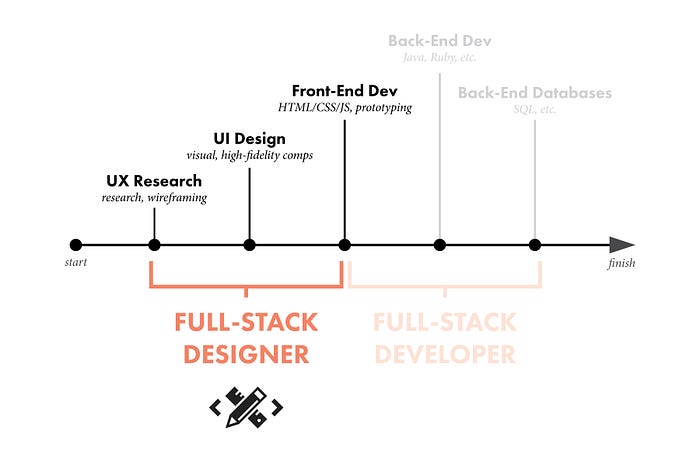
From the very outset, I had some concerns with the breadth of topics covered and the time allotted for the students to learn that material. It didn’t seem feasible or realistic to teach the basics of visual design, user experience design, interaction design, and front-end development all in the first 4 weeks. Mind you, students also had to familiarize themselves with software like Photoshop and Illustrator during that same time. My intuition and personal experience told me that you could only scratch the surface of any one of those disciplines in that period of time, because each discipline required a vastly different set of coursework and practice to develop expertise.
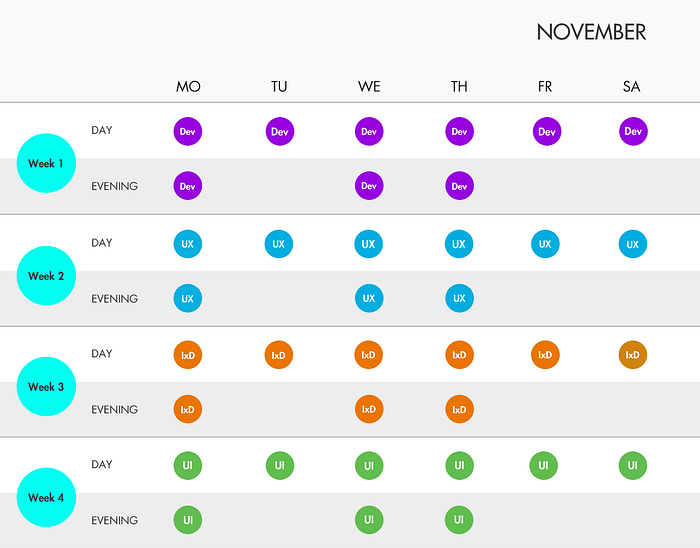
The way the concepts were distributed during that first month is as follows: one week focused on front-end development, the second week focused on UX, the third covered interaction design, and the final week concentrated on user interface design. As anyone who has ever tried to learn code could tell you, one week is not enough time to learn front-end development, even if it’s limited to just HTML and CSS. And the students were being asked to learn HTML/CSS and JavaScript. Be that as it may, I decided to trust the process and see for myself if the program was effective.
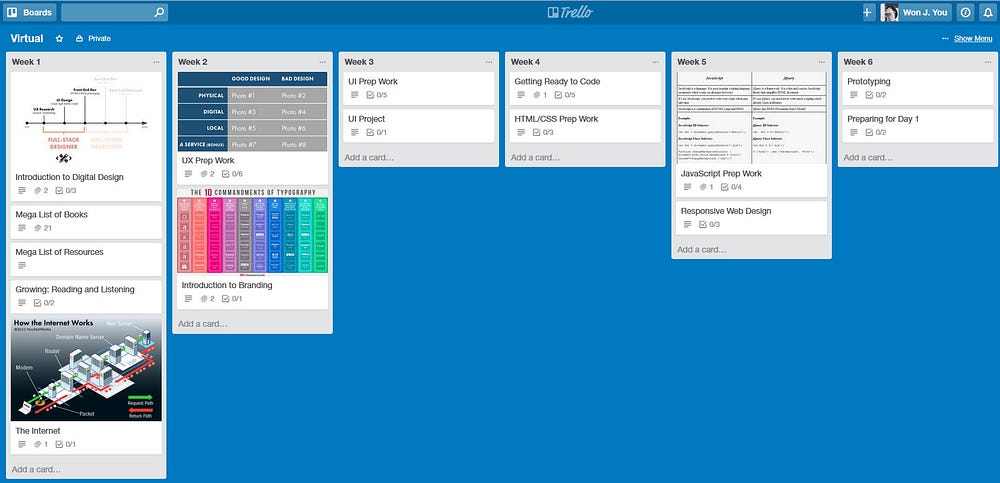
Almost immediately, I realized that the day-time exercises weren’t cohesive, and that the program had some serious content gaps. The day-time content were sparse, disorganized, and the exercises seemed haphazard and rushed. For instance, one day-time activity focused on visual layout, and it featured links to a few articles and asked students to design a poster within 3–4 hours. Unfortunately, there was no foundation established on typography or hierarchy prior to this point, a seemingly glaring omission.
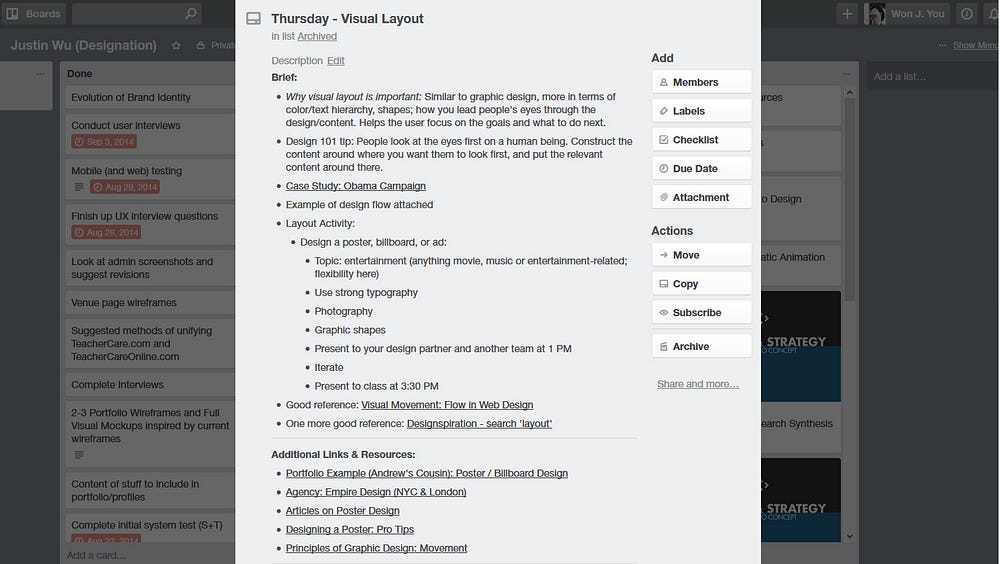
Once it became clear to me that the content needed further development, I found myself scrambling to bridge that gap. While I had hoped to find myself answering the occasional question, I found myself instead staying late into the night, helping students learn the fundamentals. By the end of my second week, I was ready to leave, but as I was deciding on my departure, I felt sadness for the students in my first cohort who would be left behind. I didn’t want them to suffer because of my rapid departure and be left with little to no guidance. It was then that I resolved to wait until the end of my first cohort before leaving.
Knowing that I was going to be around for another 12 weeks, I decided to see what I could do to help shape the curriculum. I would go on to spend much of that time, experimenting with different forms of content and workshops. Applying user experience design to the program, I came to use an iterative design process to evolve the program. I asked myself how would I design the program, what changes would I make. It might be worthwhile at this point to explain that I had no formal design education myself. My B.S. is in Mathematics and my masters is in Computer Science. Everything that I learned about design was largely self-taught. In other words, I learned the hard way.
I fell in love with web design my freshman year of college, and I found myself spending all of my free time teaching myself design and learning software like Photoshop instead of focusing on my engineering studies. What DESIGNATION represented was an opportunity to create a program for learning design in a way that I had always wanted for myself. Thus began my unexpected journey into crafting a design program.
Day-time Workshops
I applied a student-centered design approach to iterate on the course. I started by experimenting with the day-time exercises themselves. Within a matter of weeks, I quickly landed on a formula that appeared to work best. A student in that cohort described the pedagogy as: “I do, we do, you do”. Unbeknownst to me at that time, this method is a form of explicit teaching. This approach would lay the foundation for all of the practical exercises from that moment on.
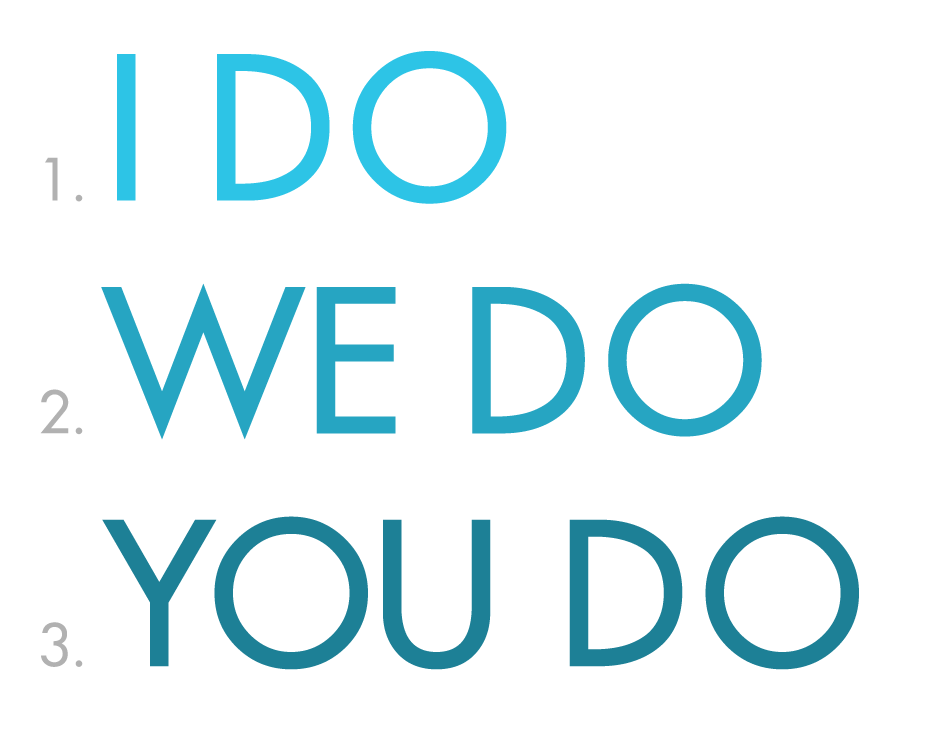
The day-time curriculum at DESIGNATION was based on kinesthetic learning, i.e. learning by doing. While this is a solid principle, the real issue was how to scaffold the students’ education so that they could apply concepts they learned on their own. Asking students to figure things out by themselves after just a 30 minute brief wasn’t very effective, because it lacked modeling.
Self-driven and motivated students were able to teach themselves the concepts with little to no assistance, but the majority of the class needed someone to show them how it was done first, i.e. “I do”. As an instructor, I needed to demonstrate how to apply a concept via an example. So, instead of simply speaking to what a user persona is, I needed to demonstrate how that works in the context of a real project. Once the students were shown how to apply those concepts, they needed an opportunity to do it themselves, but rather than having them do the work independently, I came to see that having them work in groups or in pairs was more effective. At first, I did this simply out of necessity, because I felt it was impractical to circulate through the room and help everyone individually. But as it would turn out collaboration would be an essential cornerstone to the approach.
On occasion, I would do an exercise with the whole class, but in other exercises, such as creating personas, I had the students collaborate with one another. This allowed the students to share knowledge with each another and to reinforce their learning. Nothing helps you master a concept better than having to explain it to someone else. Collaboration formed the second pillar: “we do”. When I did pair students, I always tried to pair the stronger students with the weaker ones, so that it wouldn’t end up being the blind leading the blind. Although in practice, this would prove to be difficult to adhere to on a consistent basis.
Finally, to give students a chance to retain their newly acquired knowledge and to develop their own level of mastery, I gave students the occasional homework that they would have to do individually. This last critical step would represent the “you do”.
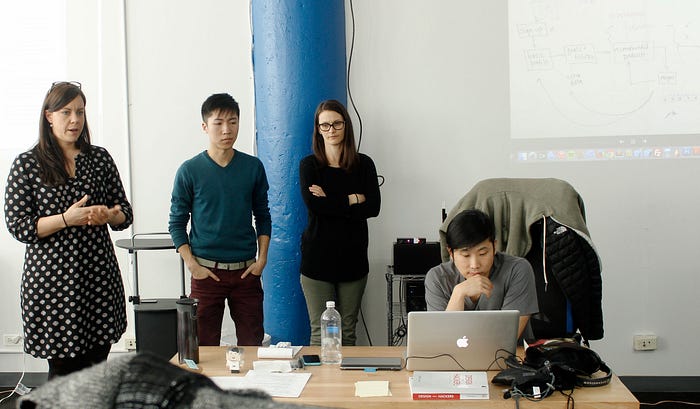
To see how this method would work for concepts like HTML, I spent an hour walking students through some of the key concepts like semantic HTML5. Then I would do a group exercise where I would have the students help me develop the markup for a single web page using those concepts. Next, I would ask the students to spend an hour trying a portion of that HTML in coding pairs, before regrouping and providing feedback on the solutions they put together. And then for homework, I gave them a different part of that page to develop on their own.
This was, by far, the most successful approach to the day-time activities. Comprehension and proficiency rose for the class. Once I had arrived at the proper structure for the day-time activities, I would go on to map the rest of the curriculum content against this method.

Even though I started with the front-end development content, I soon moved onto UX and UI. For UX, I had students learn the concept of user modeling by developing proto-personas in class. For the week on UI, I had students practice developing responsive layouts for an existing web page design. After I had overhauled much of the day-time exercises, I worked with the night-time instructors to ensure the concepts would be related to their night-time lectures. The original thinking was to try to have the theory covered at night, and for the day-time to be the place where the students would have a chance to apply it.
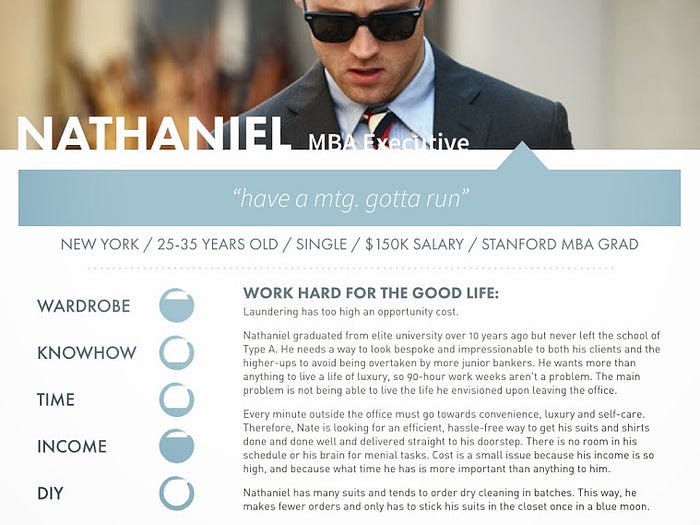
The Introduction of a Mock Project
My next challenge was helping students understand how the design process worked in a project setting. I wanted to give students practical experience applying the concepts they learned for UX and UI. At the time, students would finish their classroom phase and move immediately into client work without necessarily understanding how all of the pieces fit. And in the confines of eight weeks, some of the client projects required that the students dispense with best practices, meaning they wouldn’t necessarily learn how to do it the right way.
This was because there was almost always limited time for user research, and the students would have to base a lot of their design decisions on assumptions or client mandates. Needless to say, this environment didn’t lend itself to understanding how to really apply a user-centered process for design, and many of the students who were most interested in UX design as a career felt frustrated.
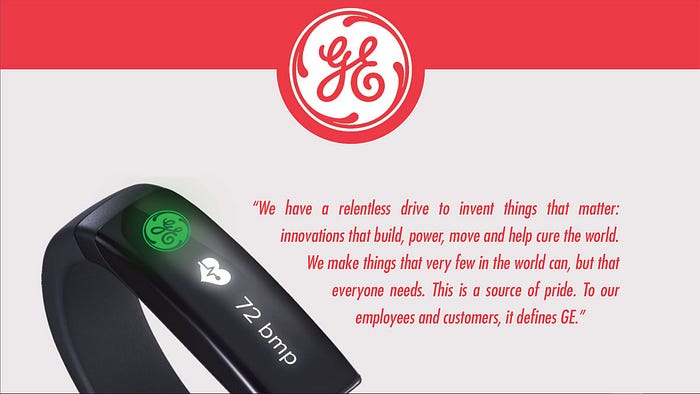
So in collaboration with the part-time instructors, I introduced a mock project called the Pulseband, a fictitious wristband capable of advanced medical diagnostics and tracking. This project prompt challenged students to perform real research with user interviews, subject matter expert interviews and truly apply a user-centered approach to design a mobile app and marketing website. This project allowed students to work in teams, learn product design, mobile design, website design, and last but not least, they had a chance to learn how to present their work.

Over the course of my tenure, I would continue to introduce many different project prompts into the program. Although there were new challenges faced with the introduction of the mock project, overall comprehension and appreciation for the design process improved. This would be an important segue before students worked on real client projects. Also, as a secondary benefit it allowed the organization to have one less client project to have to pipeline and manage.
Enhancing the Virtual Phase
With the in-person phase of the program in better shape, I turned my attention to another critical piece of the program, the 6 weeks of virtual preparation that preceded the in-person phase.
One of my first observations was that students who spent more time prior to the in-person experience, whether that was reading books, taking online courses, familiarizing themselves with Photoshop and Illustrator, performed better in the bootcamp. Obviously, this wasn’t an earth-shattering discovery. However, the question became how to ensure that all of the students had the same level of preparation before coming to the bootcamp in person.
From the very outset, when I joined DESIGNATION, I was working under a very strict constraint: time. The program was pre-sold as a 12 week in-person experience, and I didn’t have the luxury of expanding the length of the program. After I quickly discovered the limitations of the classroom phase being limited to 4 weeks, I needed to find another way to help bolster student performance without making the program longer. One of my first hacks was to shift more of the night-time content into the virtual prep. I started by taking reading assignments from the program and shifting it into the 6 week virtual. The “virtual” had very little rigor at the time, so I wanted to see how robust I could make it. How much content could I put into the remote portion of the program?
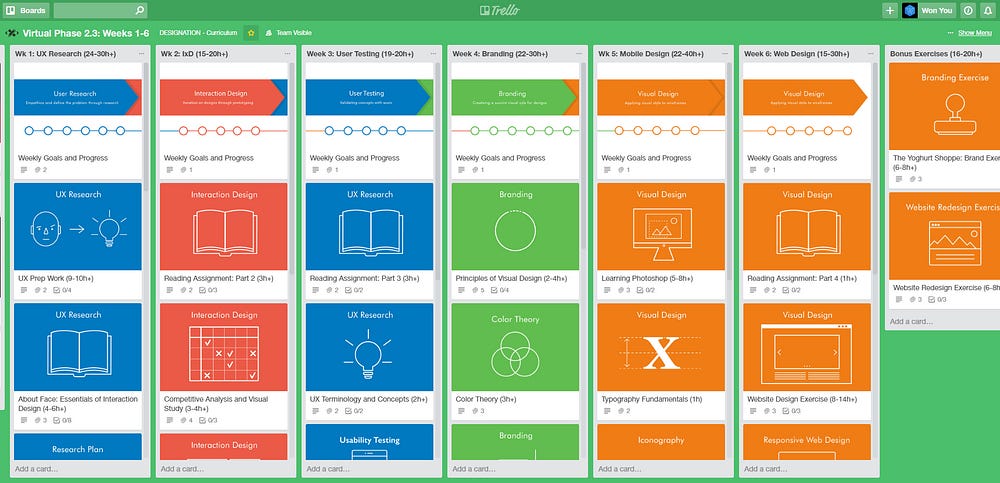
I began by moving all of the UX reading assignments, most of which was reading Designing for the Digital Age by Kim Goodwin into the Virtual phase. Then I added HTML/CSS homework that required students to take a simple design in Photoshop and make it into a webpage. I added a simple tutorial video to accompany that assignment. Next, I asked students to redesign a homepage using Photoshop. I felt confident that by having students get more practice prior to joining the in-person phase, they would get further ahead. After adding more substance to the Virtual phase, I felt that I had done what I could in my first 3 months to set Designation on a better course, and I was ready to move on.
As luck would have it, the ownership of the company would change hands during this time, and I was asked to stay on and to help continue to lead the program but now as the curriculum director. After negotiating the terms, I decided to stay, and this would lead me to make the next set of improvements to the program, which I will cover in part 2 of this series.



